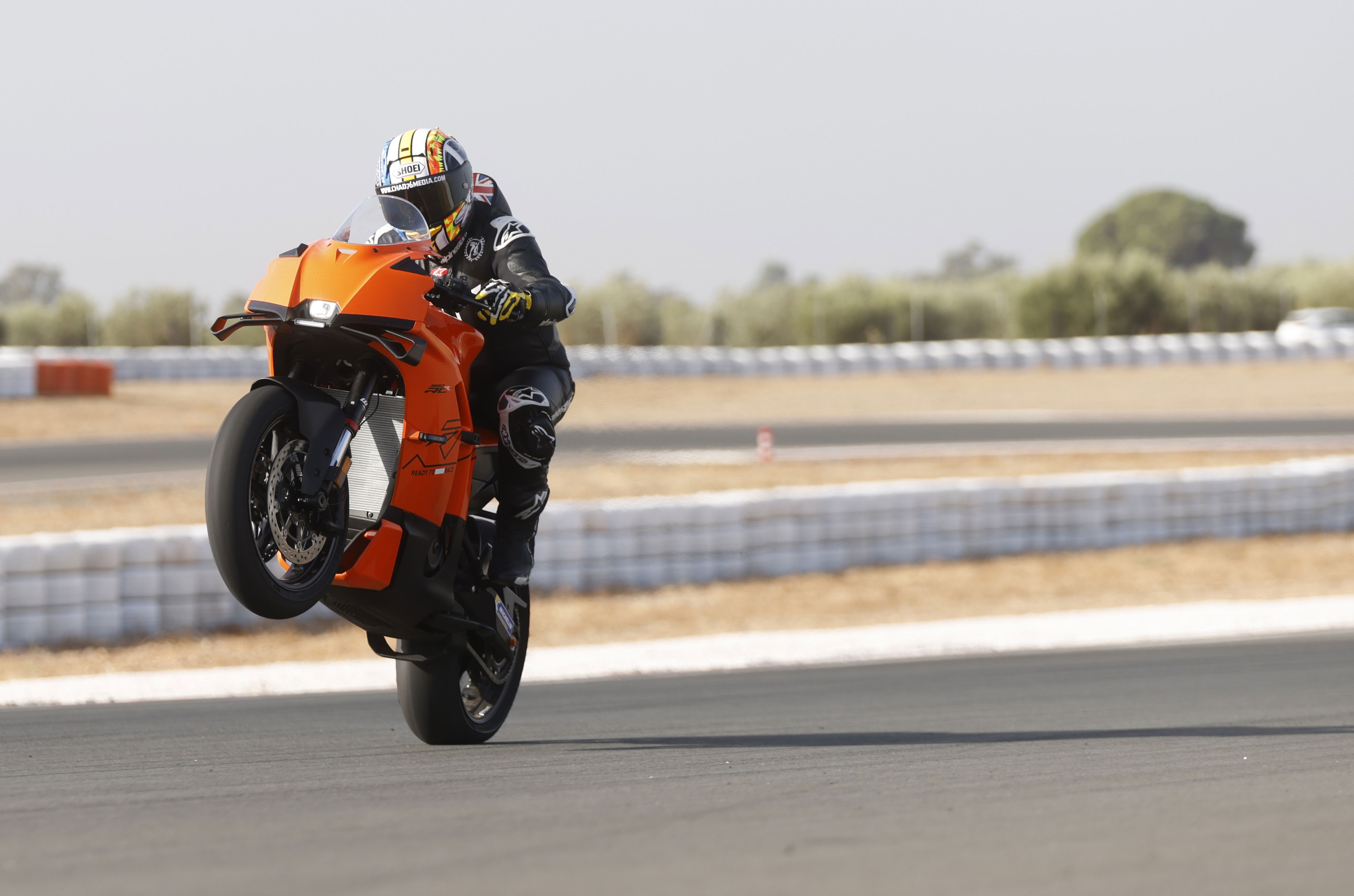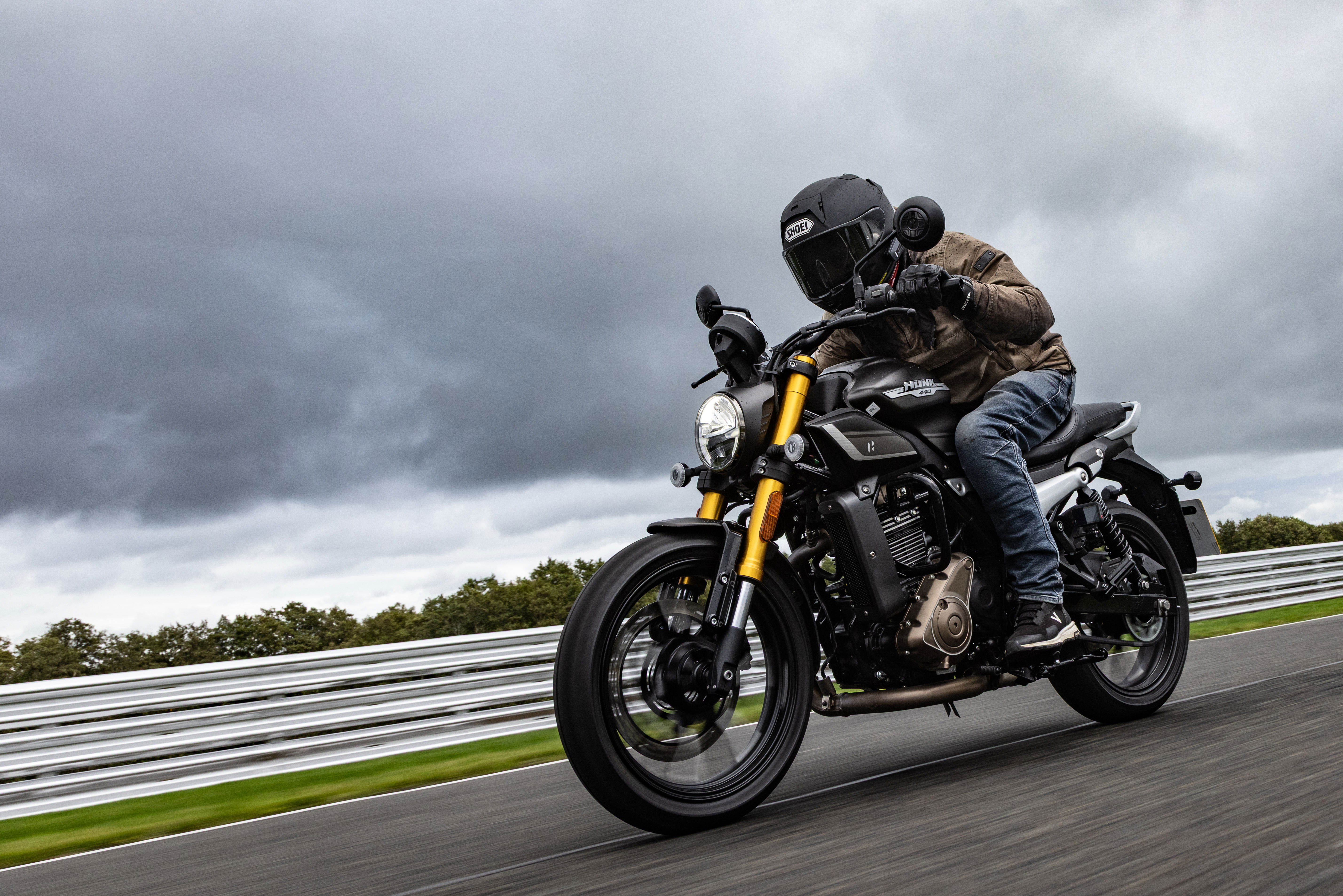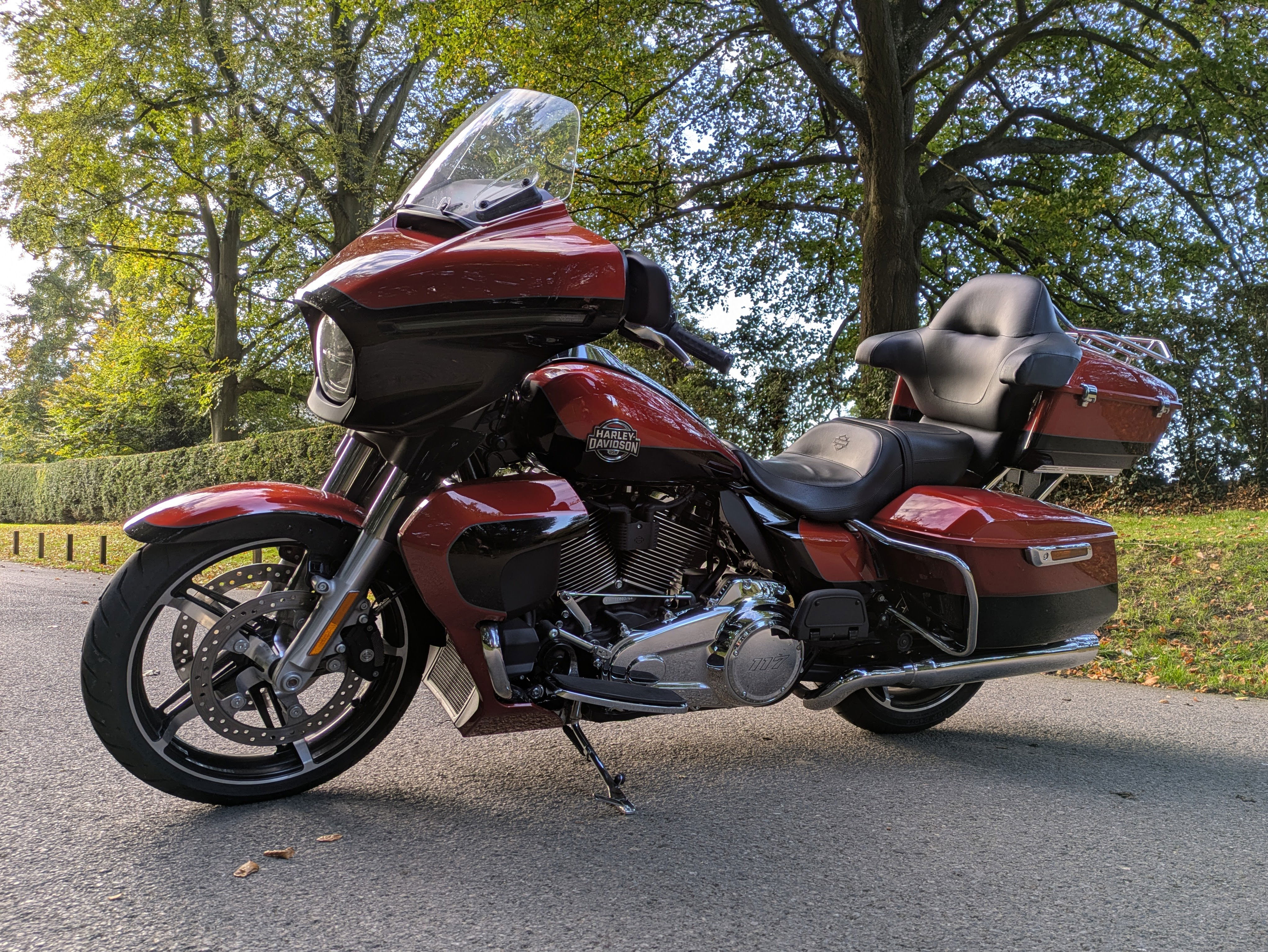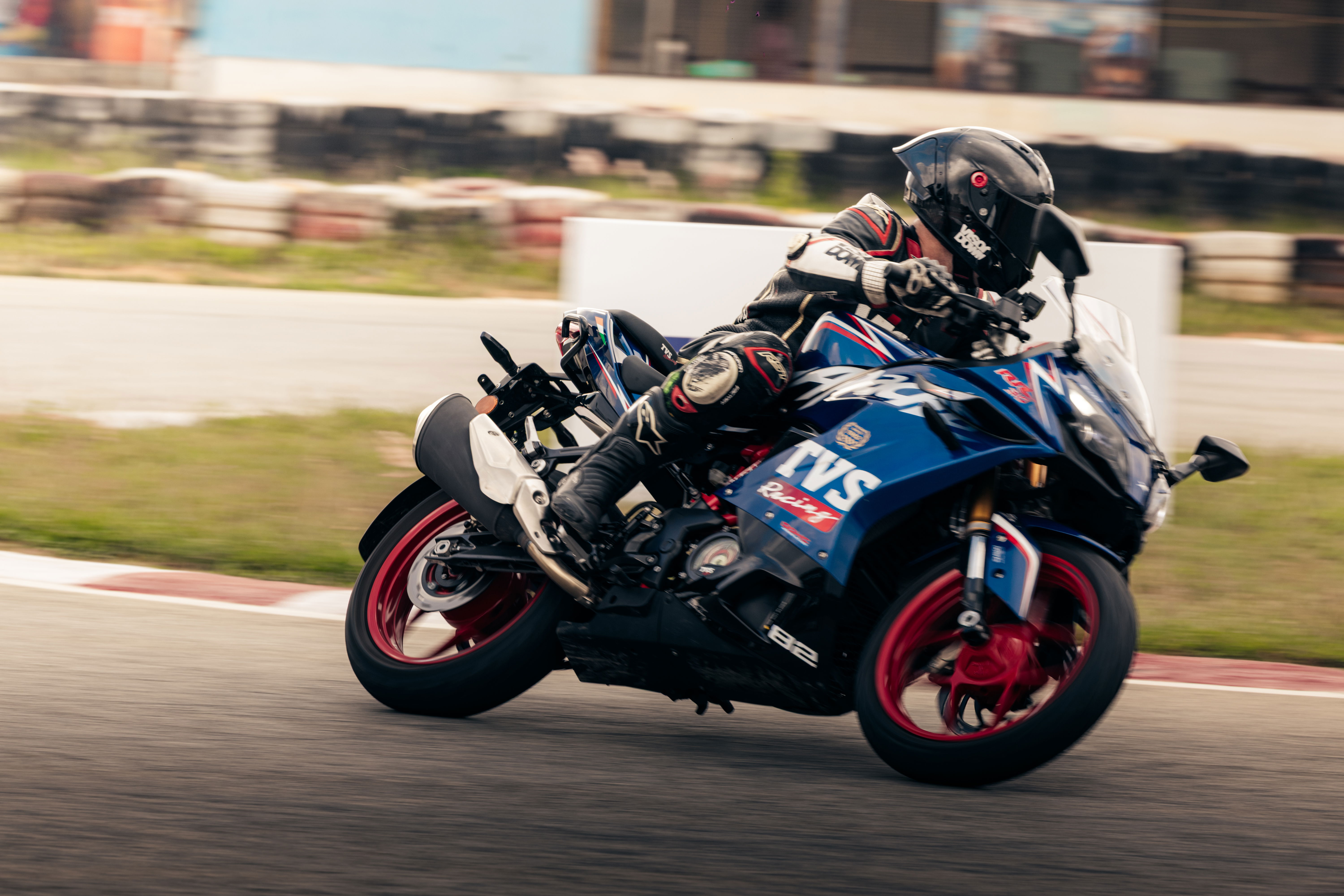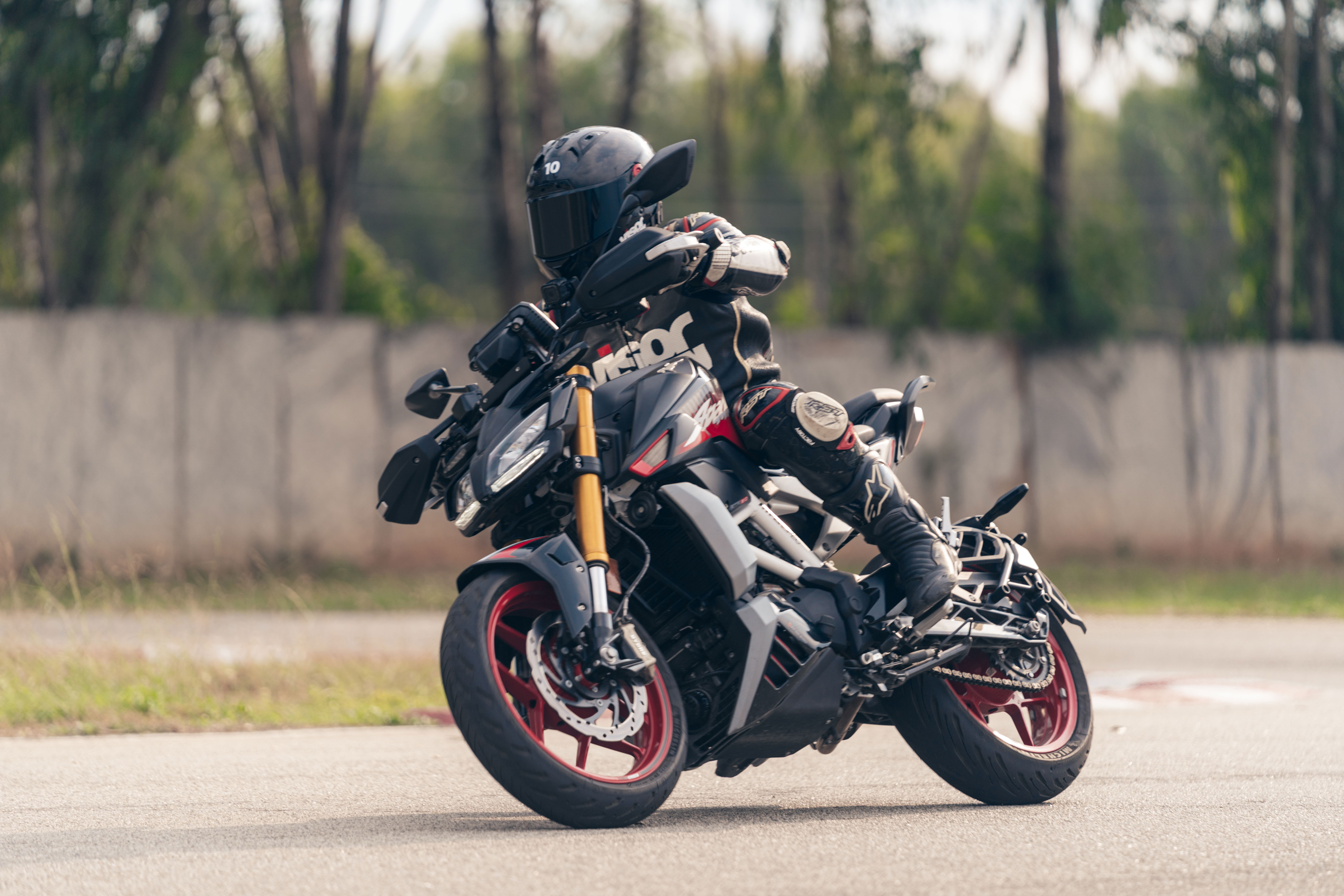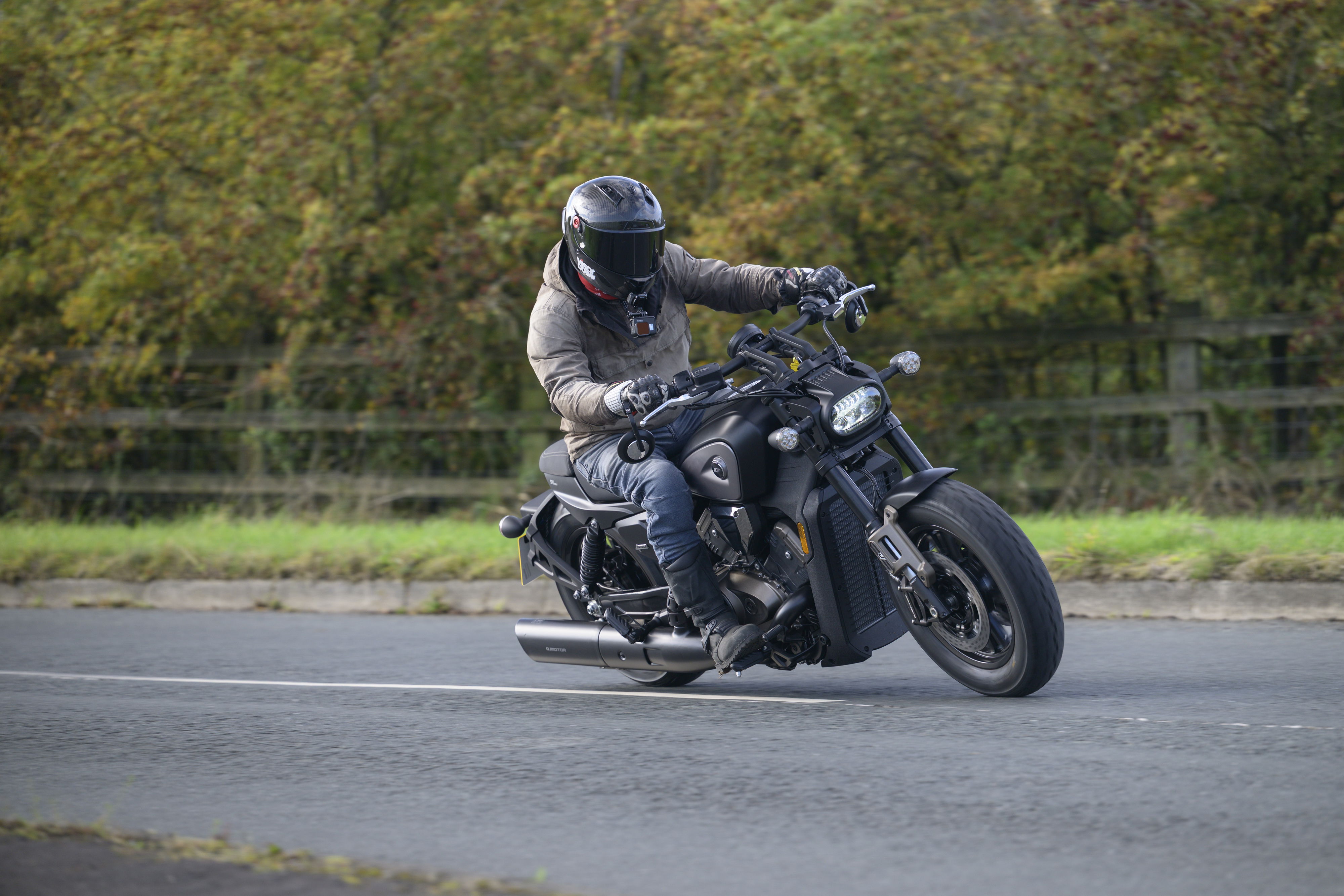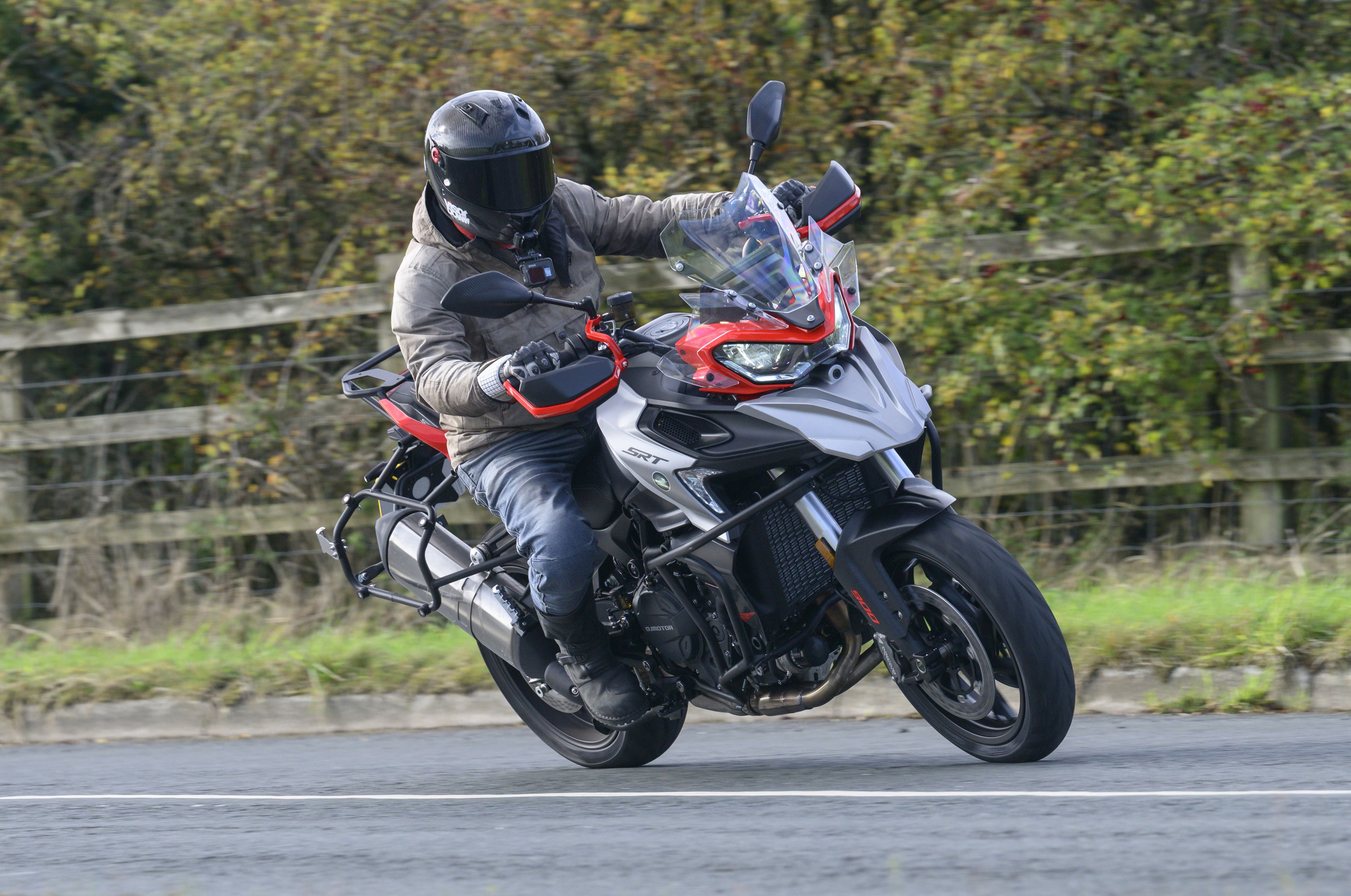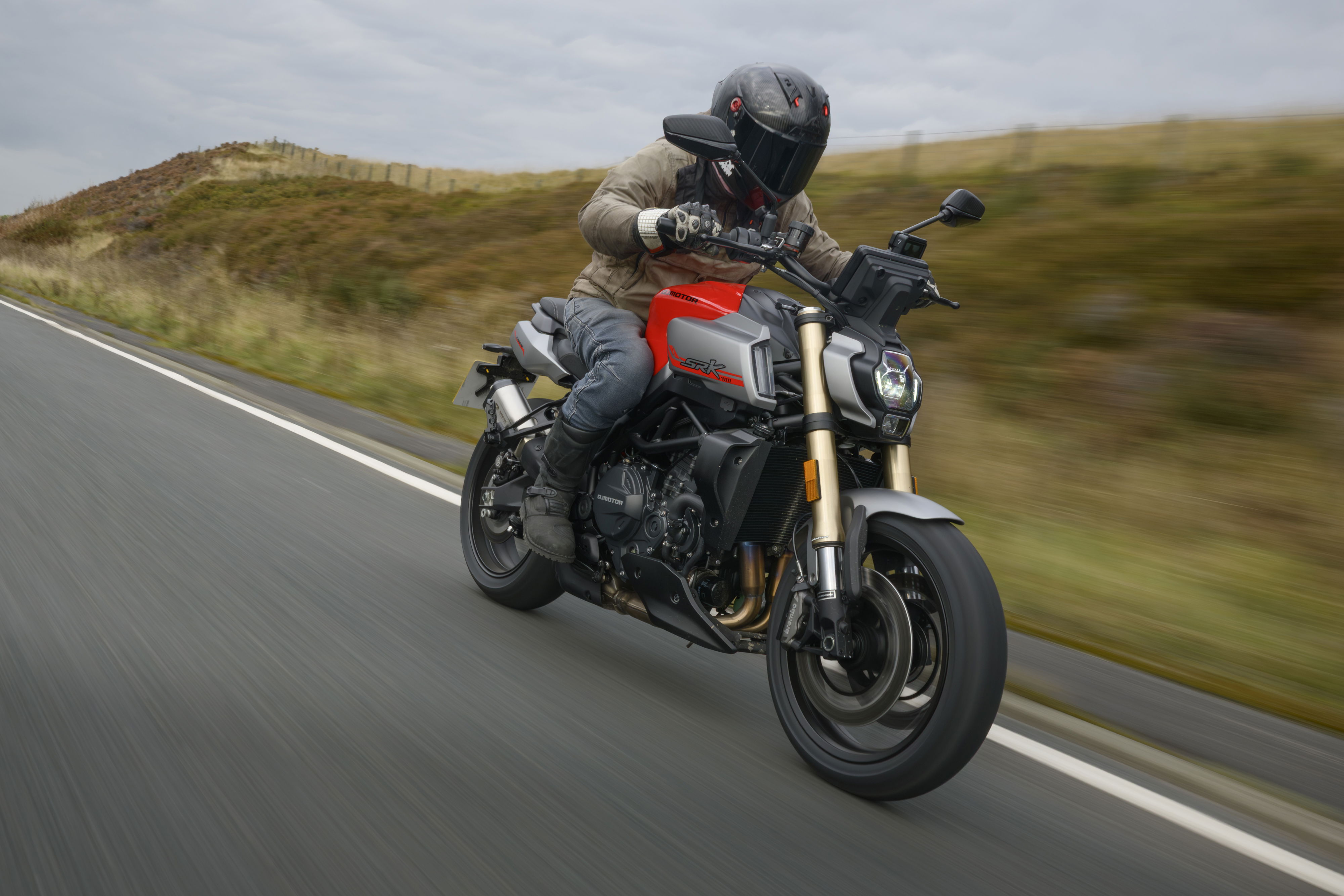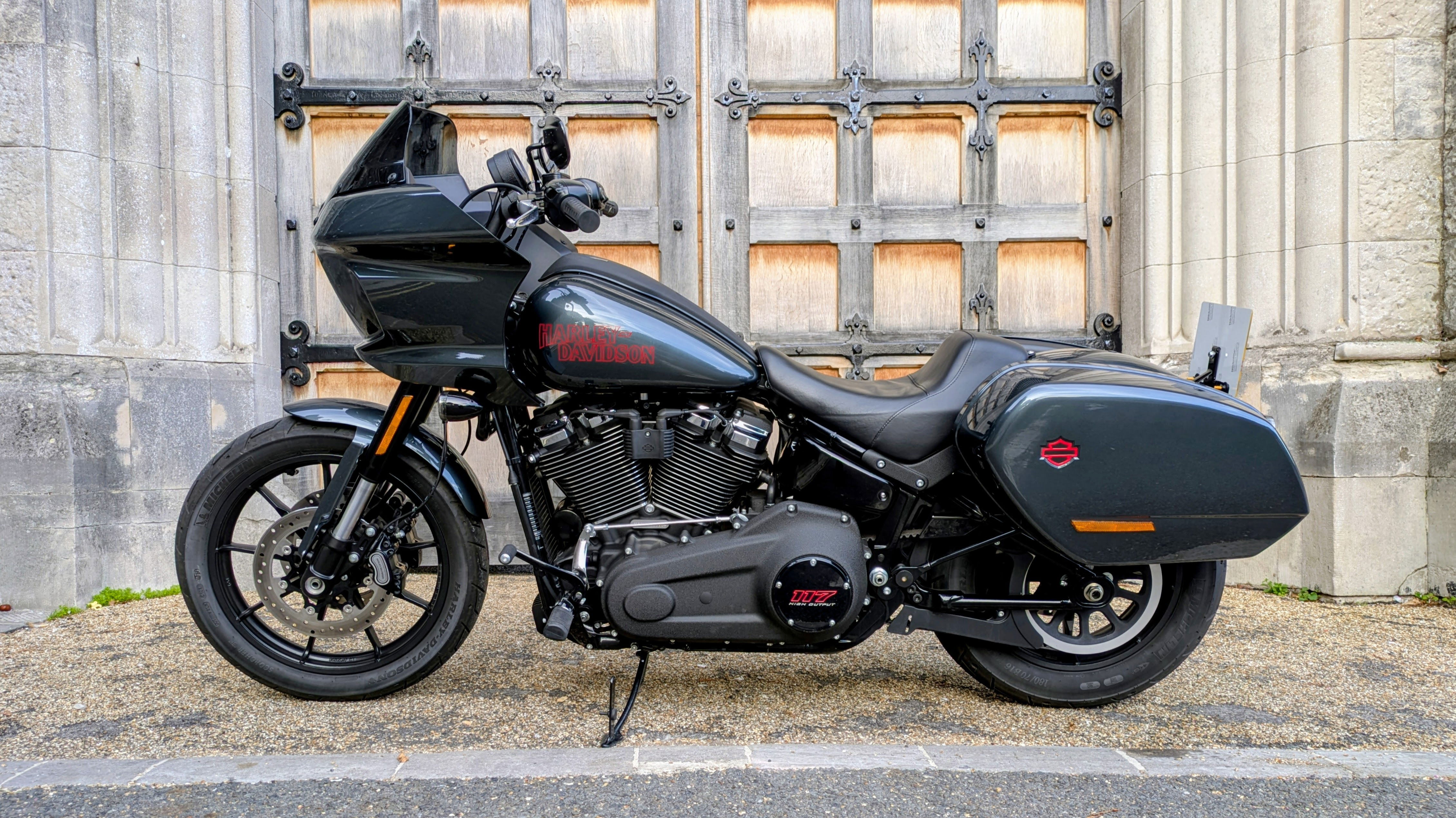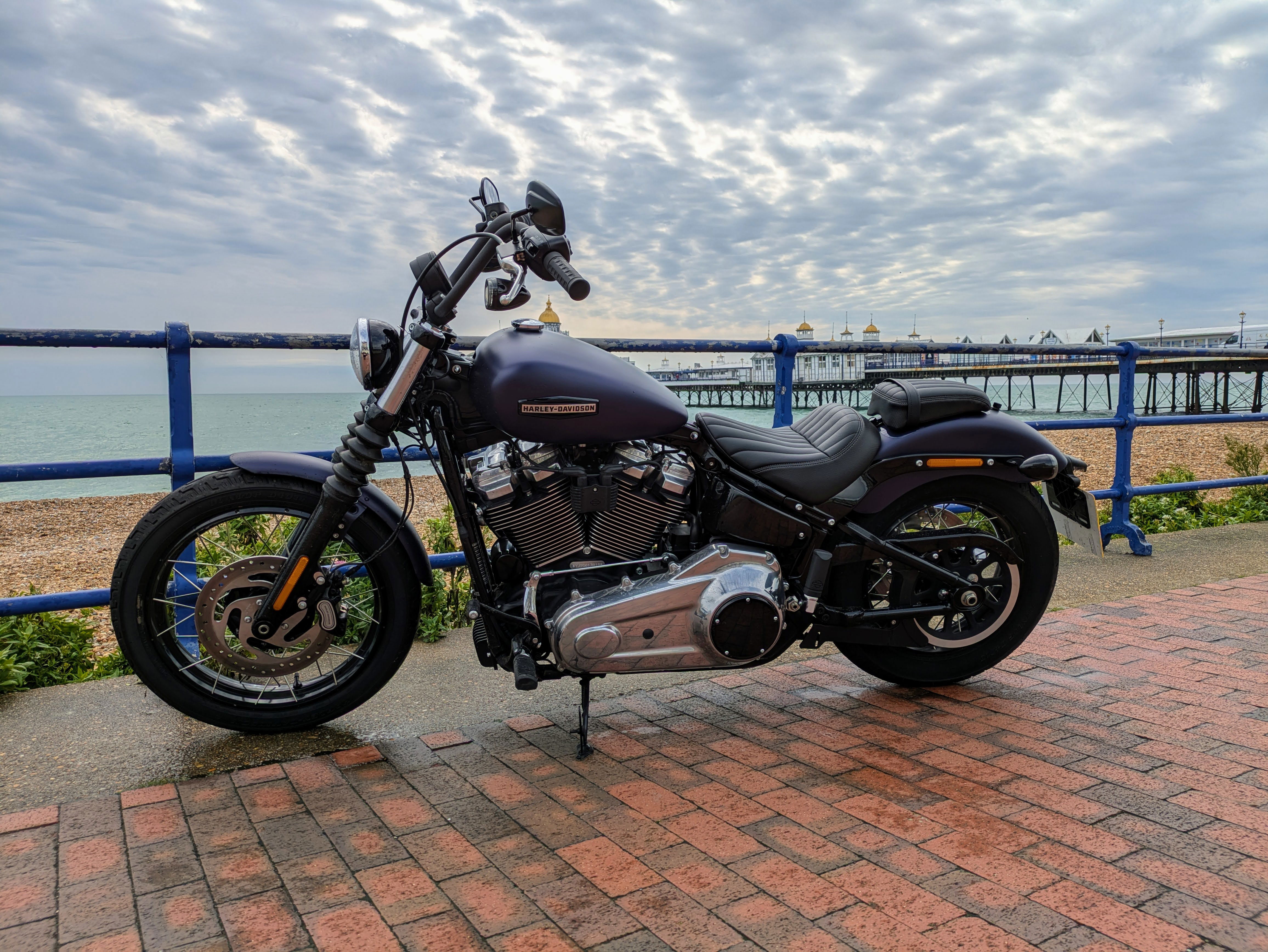Road Test: RSV-R vs. Tornado TRE vs. 999S vs. F4
Four of the sexiest Italian bikes on the planet, a run through the Alps and a cappuccino in Milan

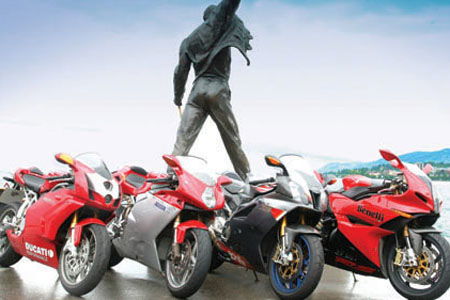 |
When it comes to beauty nothing can beat the Italians. From the women to the food everything about the country oozes sex appeal, and the bikes are no exception. When it comes to style icons and creating bikes that tug on your heartstrings, the Italians lead the way with the Japanese playing catch up.
So for a test involving four of the most beautiful and exotic bikes Italy produces we decided on a pilgrimage to their home. A tour through the stunning scenery and roads of the Swiss Alps and into Italy for a night out with the beautiful people of Milan.
Surely Ducati's controversially styled 999S, Benelli's top of the range Tornado RS (designed by a Brit), Aprilia's RSV-R Factory (also designed by a Brit) and the new MV Agusta F4-1000 would help us blend in with the locals.
But just in case they don't there's always a backup plan. None of these bikes are really designed for touring, and with only a bank holiday free we decided to draw straws and van the bikes through the dull motorways of France so we could enjoy the whole weekend in the Alps. Daryll was nominated van driver as he enjoys his own company while, as there was a chance of a decent cappuccino in the offing, TWO's editor-in-chief Grant Leonard dragged his road testing leathers out of retirement. Meanwhile someone prodded a sleeping Evil Jim in the corner of the office who, after a lot of swearing and dusting down of cobwebs, agreed to be the fourth rider as long as there was some decent wine involved somewhere along the route.
A van as back up just in case the old "Italian bike" curse hit us, three cheap Sleazyjet flights to Geneva sorted and a weekend of fun planned in a country of beautiful women, superb roads, decent weather and exotic machinery. Life is, as they say, good. And anyway, what could possibly go wrong? We are professionals after all...
I thought the only things Switzerland was known for were cuckoo clocks, an army armed with penknives and being so neutral even the most bland of interior designers would despair. But throughout the weekend Grant would regale us with little gems of information about the country which became more preposterous as the journey progressed. Although he insisted they are all true.
Take the first one. As we landed at Geneva airport Grant told us to listen out for the intercom jingle, which he claimed played the first few notes of "How much is that doggie in the window?" Needless to say it didn't.
But it did rain, and that was the first fly in the ointment. After a night in a Geneva hotel, during which we got well and truly fleeced by not checking the price of drinks, it was still raining as we unloaded the bikes. Not a problem; according to the paper it was dry in Milan, so on with the waterproofs and off we went.
Following the group along the motorway I could tell Grant had never ridden a Ducati 999 before because he spent the first five minutes attempting to adjust the mirrors to see anything apart from his elbows in them before giving it up as a bad idea. An Italian bike isn't truly an Italian bike unless the mirrors are about as much use as mudguards on a tortoise, and true to form none of these four showed anything behind without lifting an elbow and looking under an armpit. Obviously baggy waterproofs didn't help, but even with race leathers it was only the Aprilia's mirrors that actually showed something of the world behind, and then only in the outer quarter of mirror.
As the weather was bad we decided to take a detour en route to Milan and call off at Montreux to worship at the statue of Freddie Mercury. The rock legend died in Montreux in 1991 and the statue, which was used as the image on the front of Queen's 'Made In Heaven' album, was finally erected by the locals as a tribute.
Pulling up next to the statue the rain was starting to take its toll on the Benelli. Electrics are a traditional Italian weak spot and some water had got in somewhere on the RS, and it was now refusing to tick over properly. Daryll was having to rev the engine at every set of traffic lights to keep it going. The wet had also highlighted another problem, this time with the Aprilia. The Factory's back brake had given up the ghost. It felt like it just needed bleeding, and there was no sign of fluid leaking, but in the wet having a back brake is useful. But at least they were still running.
"There doesn't appear to be a neutral on the MV," said a sodden Jim.
"The Benelli hasn't got one either, unless you turn the engine off," agreed Daryll. I was struggling to find the green light on the Aprilia. Only the Ducati would actually go into neutral with any degree of certainty while the others generally needed their engines cut before disengaging a gear.
Through town, especially in the wet, this trait becomes a huge pain, not least on your wrists. None of these bikes have very light clutches or comfortable riding positions and at low speed a lot of the rider's weight is directed on the wrists, so every stop is a chance to massage some life back into them. Which, obviously, you can't do if there's a clutch that needs holding in.
In fact through the whole weekend it was the Ducati's gearbox that impressed the most. Not only did it contain just the one neutral, and in the right place too, but it was smooth, precise and light to use. The Benelli's felt like the gears were churning themselves through a mixture of oil and sawdust as it was heavy to use and required extra effort to change, while the Aprilia clunked into gear, precise but noisy. The MV didn't feel particularly sweet either.
Respects paid to Freddie, we rode past signs to the fantastically named Gland (snigger) and scary Morgue and headed off, up and into the Alps.
With the view of the mountains shrouded by a covering of mist and rain I have to say I wasn't massively impressed by my first visit to the Alps. The A1 and A9 from Geneva had been mainly dual carriageways and although reasonably sweeping were a bit dull and lifeless. But as we neared Italy the weather dried out and the roads turned into the fast, sweeping corners that I had been led to believe Alpine roads should be all about. And the bikes were starting to come into their own.
The final mountain before the Italian border was simply stunning as the perfectly surfaced road twisted and turned up through a forest and snaked its way along the mountainside, with corner after corner of fast sweepers, interspersed by tunnels hewn into the solid rock. Armed with the Benelli, which had cured its misfire as the sun came out, I was gutted when the Italian border appeared and forced the fun to stop. I've always reckoned the Tornado was underrated, as not only does it look stunning but the triple motor is really nice to use and the chassis fantastic. The RS is everything the standard Tornado is, but a bit more, everywhere. The chassis is beautifully balanced and at its absolute best through the sweeping corners we had just indulged in. Sitting on the RS it feels as though it could be a bit top heavy, as compared to the rest the riding position is very high despite the bike feeling narrow and short. But once moving it feels just about perfect. The triple motor is quite deceptively fast, and although it lacks a bit of the midrange of the V-twins or inline-four MV, it sounds harsh and raw, and once spinning matches the twins for top end.
But what it can't match them for is fuel range. The RS appears to have the same thirst for fuel that Jim and Grant do for expensive wine. All weekend the Benelli's thirst dictated our fuel stops.
It seemed that as soon as you pulled out of the petrol station the gauge was indicating low again. To be fair it was fairly inaccurate to say the least, but after 100 miles you needed to start looking for fuel and by 120 it was time to start worrying. And this was before any of the other bikes had even hit reserve.
Swapping bikes at the border - much to the guards' confusion - Jim was less than impressed by the MV: "The fuelling below 5000rpm is terrible, you open the throttle and about a week later the revs pick-up. It handles fantastically but it's just like Italian bikes of old. The Japanese would never let a bike out like this. It has to be revved to work."
Having never ridden the F4 1000 before I was gutted at Jim's words as everything I have heard about the bike made it sound fantastic - a true Japanese litre-beater. But Jim was right; the low-down fuelling is terrible. Approaching corners you close the throttle, brake, turn the bike in and then open the throttle and wait... before the engine responds. It's only a split second delay but feels like an age when you're trying to push on. It's awful. The delay followed by the kick as the power comes in upsets the bike mid-corner, meaning you just don't have the confidence to corner hard on it. With the engine pulling the MV handles fantastically, just like the smaller 750cc version, but the glitch low down is so noticeable it ruins the whole package.
With the weather good, and Milan not too far away, we decided to take a bit of a detour and head towards some of the ski resorts. Traditionally the winding roads leading to them are full of testing switchbacks, sharp corners and hairpins. Unfortunately this proved a bad idea as our large-scale European map proved a little inaccurate and needless to say we got completely lost.
Almost two hours later, during which time none of the bikes managed to get over 50mph along the twisty, single track roads, all of us were feeling like our wrists had been broken several times over. Jim's osteopath was promoted to the 'friends and family' list on his mobile phone and Grant was rapidly losing feeling in his hands, which was a potential disaster as he signs the expenses off. On faster corners the horribly uncomfortable riding positions of all these bikes are almost unnoticeable as the wind lifts the body and takes pressure off the wrists, but get below 50mph for any period of time and it's agony. Even the Aprilia, which doesn't have such an extreme riding position due to its slightly larger size, was causing Daryll discomfort and, to make matters worse, the Benelli was low on fuel. Again.
Just when we were considering giving in and getting the van involved the road opened up and we arrived at Lake Maggiore. Any idea of making it to Milan was abandoned in favour of a beer, mainly because after stopping none of us could face riding the bikes again.
The next morning, with a plane to catch in the afternoon we set off early and, rather than repeat our route of the previous day, took the A5 back to Geneva through the Mont Blanc tunnel. After a slight 'detour' where snapper James got confused between Geneva and Genoa and started heading in the wrong direction, we were getting seriously pushed for time. Pulling into a petrol station on the way the four Italian bikes caused quite a stir with the obviously very patriotic pump attendants, so it was all the more embarrassing when Daryll, riding the MV, pushed the starter button only to be rewarded by a click. It sounded like a dead battery so we bumped the bike, which fired up, and headed on our way. After about a mile I noticed that the MV was missing in my mirrors. Fearing the worse we slowed and pulled over.
Sure enough, about ten minutes later Daryll coasted downhill and into view with a very dead MV. Conveniently, the quick-release fairing fasteners allowed fast hard-shoulder access to the behind-the-scenes workings of the MV but it was to no avail. One bike down and both Daryll and the MV relegated to the van. Well, it wouldn't be a proper Italian bike test if they had all made it home in one piece, would it?
With Jim, Grant and myself left on the bikes we were taking it easy through the beautiful scenery leading up to the tunnel. Having only ridden the Ducati 999S on track before I was pleasantly surprised by how good a road bike it makes. As long as speed is above 70mph to take some weight off your wrists the Ducati is surprisingly refined. Despite the seat having virtually no padding it seems wide enough to spread your weight around comfortably, but it's the engine that makes it so usable. The 999's motor is surprisingly smooth, especially compared to the revvy Aprilia, and at a fast cruise is beautiful.
Compared to other 999s I've ridden the suspension seemed to be set slightly softer on this particular machine and it made it a much better road bike with a less harsh ride yet without compromising the handling.
While filling the bikes up with fuel Grant, who had just been riding the 999S, reckoned it to be "the most refined Ducati I've ever ridden - so much more than the 998 range. It's a real surprise, out of the four bikes it's either the 999S or MV for me."
Jim, who had been riding the Aprilia, was starting to bond with the Factory. "It doesn't feel anything like as special as the other bikes here," he reckoned, "but it's good. The brakes are the best of the four, although the Ducati's are close behind, and the handling is good. The problem is it just lacks character."
At £10,700 the Factory is the cheapest of the bikes here and it feels that little bit less exclusive. Where the others chose to produce a more limited number of exclusive models, the Aprilia has a more mass-produced, almost Japanesey feel about it, and not the classy Italian aura of the others. But it is still Italian.
While the motor is more powerful than the Ducati's it doesn't have the same creamy smooth feeling to its delivery, or gearbox come to that, and instead is much more revvy in nature. And it's the same with the handling. There is little wrong with way the Aprilia turns or holds a line, but it doesn't feel quite as polished as the others, as if the …hlins suspension is just a step or two lower in quality than the Ducati's.
With such stunning views on the return leg, especially around Mont Blanc, it was easy to lose track of time. Emerging from the Mont Blanc tunnel (which is a staggering 11km long) it was a bit of a shock to see a motorway gantry showing the time as 3:10, all the more so as our flight left at 4:15 and we were still over 120km from Geneva. Time to open them up.
Ironically it was during a very silly 140mph-plus full-on Cannonball Run-style ride towards the airport that all of these bikes came into their own. Despite the Aprilia's service warning light flashing at anything above 8000rpm, which was slightly disturbing at 140mph, it was brilliant through the long and open motorway corners, and afterwards both Grant and Jim were equally impressed by the Benelli and Ducati.
Arriving at the check-in desk at exactly four o'clock and still wearing full race leathers, amazingly we were allowed on the flight. Once in our seats three very tired and sore riders had the chance to discuss the weekend. For a start we were all relieved to have survived, especially the last minute dash to the airport, and surprised that most of the bikes had too. Most of them, not all. Italian machines have a reputation for unreliability, which is why we took a backup van. Is this deserved? Well, yes if you take the MV as an example. The Aprilia's lack of rear brake was simply down to a lack of maintenance, while the Benelli's tick-over problem could be cured with a bit of WD40. But the MV's complete and utter stoppage would have left us stranded were it not for the van. According to MV, the fault is simply a dead battery, which could also explain the fuelling problem, but on a bike less than half-a-year old this is unacceptable.
On the road the handling is virtually inseparable between the four, but for us the Ducati and Benelli just top the tree. And the Ducati has a far better fuel range and gearbox than the Benelli. For looks the MV wins hands, feet and knees down. It's a beautiful motorcycle from every angle and always attracts admirers, but the Benelli also has a certain charm and the 999S looks far better with a single seat unit.
So given the choice which would we own? It's a toss up between the Ducati and the MV. The Aprilia is an excellent bike but doesn't quite have the kudos of the others, while the Benelli needs a few extra horsepower and a better gearbox. And a bigger tank. Despite being the only bike to finish the test in the back of a van the MV really impressed, it handles brilliantly, has a great top end and, despite the low-down fuelling being so bad, its look, sound and feel still win over.
But when all's said and done the Ducati wins it, mainly because it didn't miss a beat all weekend. As a road bike the 999S is refined, fast and a beautiful handler with a look, and name, that attracts attention. Made in heaven? No, a small town in Italy called Bologna.
SIMON BOWEN'S SECOND OPINION
1 Ducati Single seat improves the 999's looks substantially. Not as involving or charismatic as its predecessor but it's just so easy, and absolutely stunning, to ride. Top marks to the Bologna boys - this bike is pure pedigree and an absolute peach.
2 Aprilia Fantastic performer with excellent engine, braking and handling. Great styling let down by dreadful stick-on graphics. Looks tacky in this company.
3 Benelli Characterful triple that is faster than it feels, but needs some encouragement to get moving. Perhaps not quite as agile or frisky as the Aprilia or Ducati, but a fine motorcycle and worthy contender here.
4 MV Agusta Familiar extreme riding position coupled with useless mirrors makes for anxious progress at speed. Heavy throttle and steering. Still the most beautiful bike in the world. Fluffy fueling below 3000rpm and couldn't handle full throttle below 5000rpm. Not much to shout about up top either - a real disappointment.
GRANT LEONARD'S SECOND OPINION
This is a great mix of bikes - two twins, a triple and a four - each so different, yet sharing so many genes - nice, tight-fitting, Italian designer genes.
The MV 1000 and the Ducati were my favourites before they came out of the van - and when they went back in (even if one of them was dead). And after the weekend my order of preference is:
1 The MV It's a beast. A gorgeous beast and almost intimidating. This is the motor it should have been born with. It gives the bike a menacing edge which the 750F4 lacks, and really proves the chassis.
2 The Ducati Massively capable, but doesn't ram it down your throat. It feels so unstressed, easily the most refined, predictably stable and gives you a fast, harmonious ride. But compared to its predecessor, the 998, it felt tamed and a bit sad for that. You could say that's progress...
3 The Benelli The raucous triple reminded me of an old Laverda Jota, indeed the whole package was a little too 20th Century - styling and chassis integrity.
4 The Mille Great though it is, the Aprilia had nothing to make it stand out in this company.
SPECS - APRILIA
TYPE - SUPERSPORTS
PRODUCTION DATE - 2004
PRICE NEW - £10,725
ENGINE CAPACITY - 997cc
POWER - 123.1bhp@9000rpm
TORQUE - 70.8lb.ft@8000rpm
WEIGHT - 185kg
SEAT HEIGHT - 820mm
FUEL CAPACITY - 17L
TOP SPEED - 160.2mph
0-60 - n/a
TANK RANGE - 153MILES
SPECS - BENELLI
TYPE - SUPERSPORTS
PRODUCTION DATE - 2004
PRICE NEW - £13,500
ENGINE CAPACITY - 898cc
POWER - 123.3bhp@9100rpm
TORQUE - 75.2lb.ft@7200rpm
WEIGHT - 195kg
SEAT HEIGHT - 810mm
FUEL CAPACITY - 20.5L
TOP SPEED - 147.3mph
0-60 - n/a
TANK RANGE - 120MILES
SPECS - DUCATI
TYPE - SUPERSPORTS
PRODUCTION DATE - 2004
PRICE NEW - £13,950
ENGINE CAPACITY - 998cc
POWER - 133.3bhp@10,000rpm
TORQUE - 75.9lb.ft@8000rpm
WEIGHT - 199kg
SEAT HEIGHT - 780mm
FUEL CAPACITY - 15.5L
TOP SPEED - 156.3mph
0-60 - n/a
TANK RANGE - 143MILES
SPECS - MV AGUSTA
TYPE - SUPERSPORTS
PRODUCTION DATE - 2004
PRICE NEW - £14,000
ENGINE CAPACITY - 998cc
POWER - 153.4bhp@10,700rpm
TORQUE - 75.9lb.ft@9700rpm
WEIGHT - 192kg
SEAT HEIGHT - 810mm
FUEL CAPACITY - 21L
TOP SPEED - 157.8mph
0-60 - n/a
TANK RANGE - 158MILES
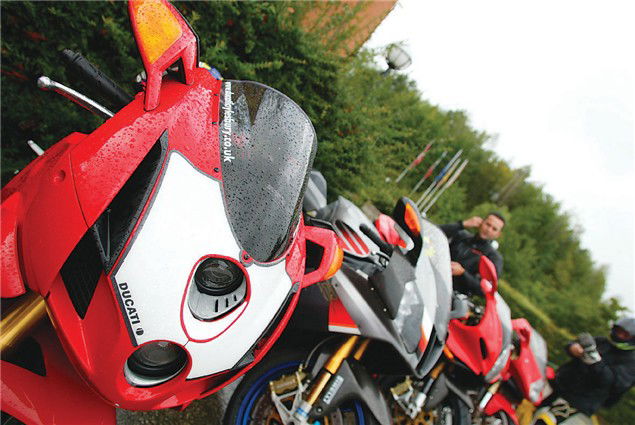
When it comes to beauty nothing can beat the Italians. From the women to the food everything about the country oozes sex appeal, and the bikes are no exception. When it comes to style icons and creating bikes that tug on your heartstrings, the Italians lead the way with the Japanese playing catch up.
So for a test involving four of the most beautiful and exotic bikes Italy produces we decided on a pilgrimage to their home. A tour through the stunning scenery and roads of the Swiss Alps and into Italy for a night out with the beautiful people of Milan.
Surely Ducati's controversially styled 999S, Benelli's top of the range Tornado RS (designed by a Brit), Aprilia's RSV-R Factory (also designed by a Brit) and the new MV Agusta F4-1000 would help us blend in with the locals.
But just in case they don't there's always a backup plan. None of these bikes are really designed for touring, and with only a bank holiday free we decided to draw straws and van the bikes through the dull motorways of France so we could enjoy the whole weekend in the Alps. Daryll was nominated van driver as he enjoys his own company while, as there was a chance of a decent cappuccino in the offing, TWO's editor-in-chief Grant Leonard dragged his road testing leathers out of retirement. Meanwhile someone prodded a sleeping Evil Jim in the corner of the office who, after a lot of swearing and dusting down of cobwebs, agreed to be the fourth rider as long as there was some decent wine involved somewhere along the route.
A van as back up just in case the old "Italian bike" curse hit us, three cheap Sleazyjet flights to Geneva sorted and a weekend of fun planned in a country of beautiful women, superb roads, decent weather and exotic machinery. Life is, as they say, good. And anyway, what could possibly go wrong? We are professionals after all...
I thought the only things Switzerland was known for were cuckoo clocks, an army armed with penknives and being so neutral even the most bland of interior designers would despair. But throughout the weekend Grant would regale us with little gems of information about the country which became more preposterous as the journey progressed. Although he insisted they are all true.
Take the first one. As we landed at Geneva airport Grant told us to listen out for the intercom jingle, which he claimed played the first few notes of "How much is that doggie in the window?" Needless to say it didn't.
But it did rain, and that was the first fly in the ointment. After a night in a Geneva hotel, during which we got well and truly fleeced by not checking the price of drinks, it was still raining as we unloaded the bikes. Not a problem; according to the paper it was dry in Milan, so on with the waterproofs and off we went.
Following the group along the motorway I could tell Grant had never ridden a Ducati 999 before because he spent the first five minutes attempting to adjust the mirrors to see anything apart from his elbows in them before giving it up as a bad idea. An Italian bike isn't truly an Italian bike unless the mirrors are about as much use as mudguards on a tortoise, and true to form none of these four showed anything behind without lifting an elbow and looking under an armpit. Obviously baggy waterproofs didn't help, but even with race leathers it was only the Aprilia's mirrors that actually showed something of the world behind, and then only in the outer quarter of mirror.
As the weather was bad we decided to take a detour en route to Milan and call off at Montreux to worship at the statue of Freddie Mercury. The rock legend died in Montreux in 1991 and the statue, which was used as the image on the front of Queen's 'Made In Heaven' album, was finally erected by the locals as a tribute.
Pulling up next to the statue the rain was starting to take its toll on the Benelli. Electrics are a traditional Italian weak spot and some water had got in somewhere on the RS, and it was now refusing to tick over properly. Daryll was having to rev the engine at every set of traffic lights to keep it going. The wet had also highlighted another problem, this time with the Aprilia. The Factory's back brake had given up the ghost. It felt like it just needed bleeding, and there was no sign of fluid leaking, but in the wet having a back brake is useful. But at least they were still running.
"There doesn't appear to be a neutral on the MV," said a sodden Jim.
"The Benelli hasn't got one either, unless you turn the engine off," agreed Daryll. I was struggling to find the green light on the Aprilia. Only the Ducati would actually go into neutral with any degree of certainty while the others generally needed their engines cut before disengaging a gear.
Through town, especially in the wet, this trait becomes a huge pain, not least on your wrists. None of these bikes have very light clutches or comfortable riding positions and at low speed a lot of the rider's weight is directed on the wrists, so every stop is a chance to massage some life back into them. Which, obviously, you can't do if there's a clutch that needs holding in.
In fact through the whole weekend it was the Ducati's gearbox that impressed the most. Not only did it contain just the one neutral, and in the right place too, but it was smooth, precise and light to use. The Benelli's felt like the gears were churning themselves through a mixture of oil and sawdust as it was heavy to use and required extra effort to change, while the Aprilia clunked into gear, precise but noisy. The MV didn't feel particularly sweet either.
Respects paid to Freddie, we rode past signs to the fantastically named Gland (snigger) and scary Morgue and headed off, up and into the Alps.
With the view of the mountains shrouded by a covering of mist and rain I have to say I wasn't massively impressed by my first visit to the Alps. The A1 and A9 from Geneva had been mainly dual carriageways and although reasonably sweeping were a bit dull and lifeless. But as we neared Italy the weather dried out and the roads turned into the fast, sweeping corners that I had been led to believe Alpine roads should be all about. And the bikes were starting to come into their own.


